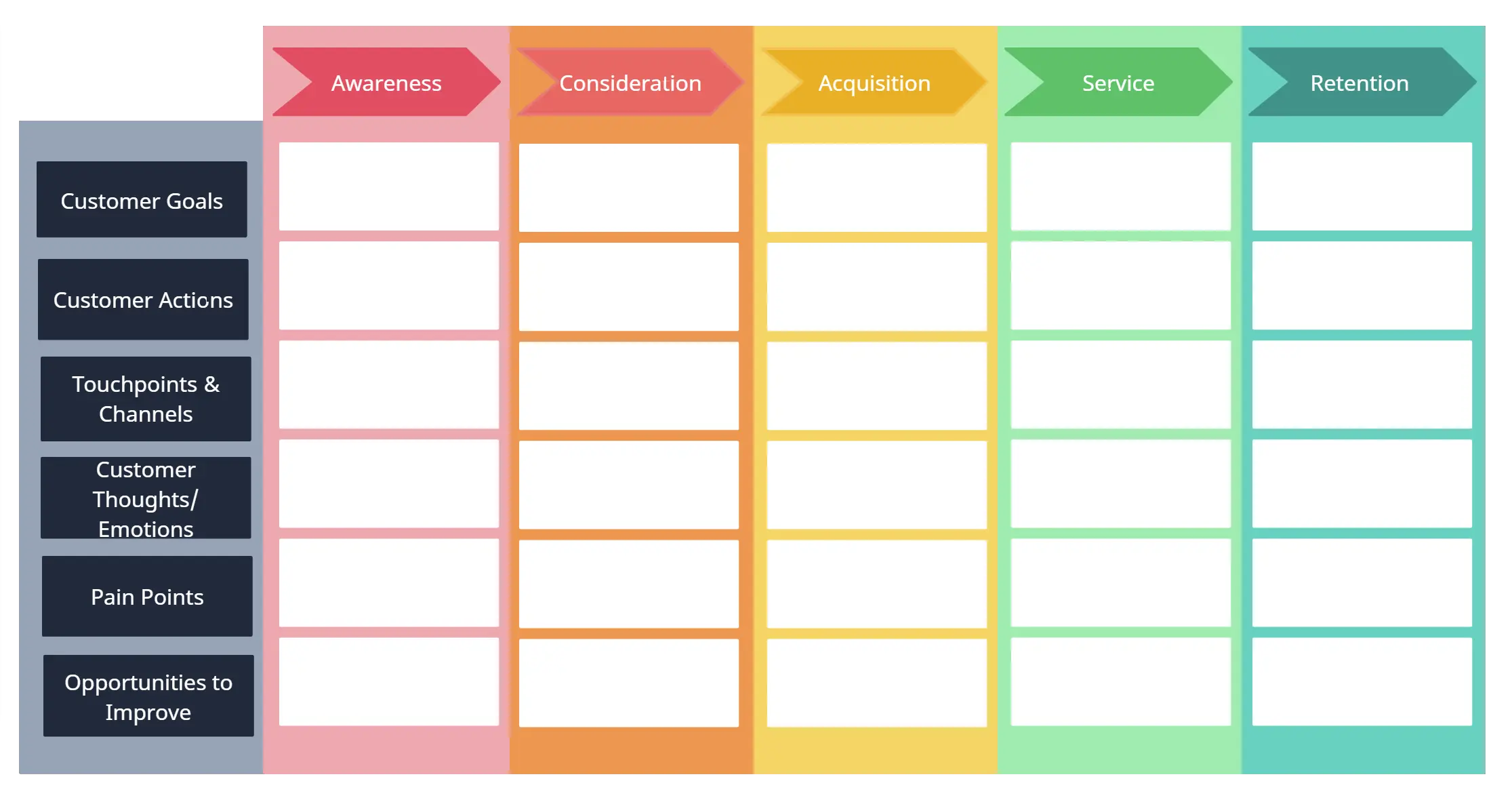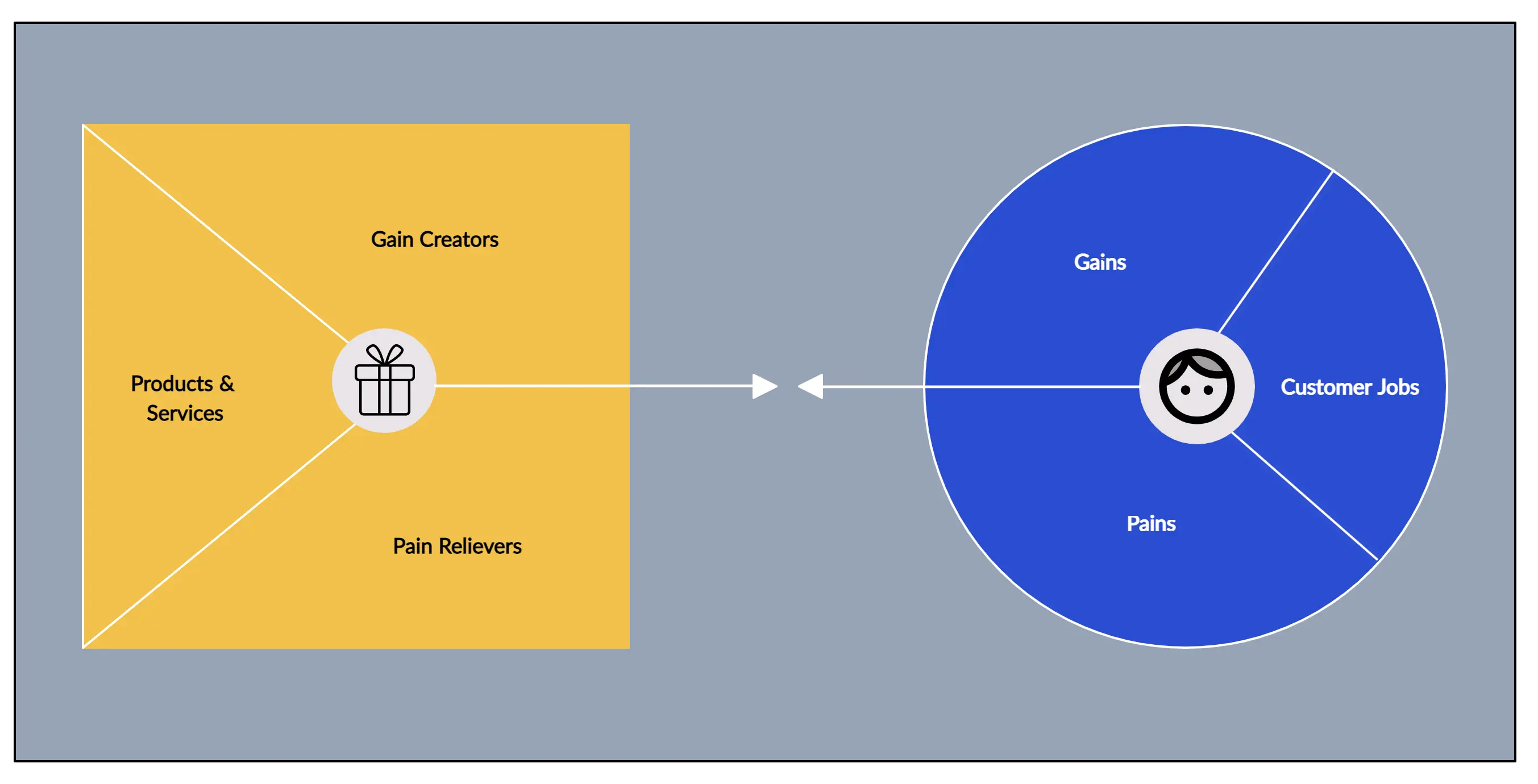

Got a new business idea, but don’t know how to put it to work? Want to improve your existing business model? Overwhelmed by writing your business plan? There is a one-page technique that can provide you the solution you are looking for, and that’s the business model canvas.
In this guide, you’ll have the Business Model Canvas explained, along with steps on how to create one. All business model canvas examples in the post can be edited online.
A business model is simply a plan describing how a business intends to make money. It explains who your customer base is and how you deliver value to them and the related details of financing. And the business model canvas lets you define these different components on a single page.
The Business Model Canvas is a strategic management tool that lets you visualize and assess your business idea or concept. It’s a one-page document containing nine boxes that represent different fundamental elements of a business.
The business model canvas beats the traditional business plan that spans across several pages, by offering a much easier way to understand the different core elements of a business.
The right side of the canvas focuses on the customer or the market (external factors that are not under your control) while the left side of the canvas focuses on the business (internal factors that are mostly under your control). In the middle, you get the value propositions that represent the exchange of value between your business and your customers.
The business model canvas was originally developed by Alex Osterwalder and Yves Pigneur and introduced in their book ‘Business Model Generation’ as a visual framework for planning, developing and testing the business model(s) of an organization.

Why do you need a business model canvas? The answer is simple. The business model canvas offers several benefits for businesses and entrepreneurs. It is a valuable tool and provides a visual and structured approach to designing, analyzing, optimizing, and communicating your business model.
Here’s a step-by-step guide on how to create a business canvas model.
Step 1: Gather your team and the required material Bring a team or a group of people from your company together to collaborate. It is better to bring in a diverse group to cover all aspects.
While you can create a business model canvas with whiteboards, sticky notes, and markers, using an online platform like Creately will ensure that your work can be accessed from anywhere, anytime. Create a workspace in Creately and provide editing/reviewing permission to start.
Step 2: Set the context Clearly define the purpose and the scope of what you want to map out and visualize in the business model canvas. Narrow down the business or idea you want to analyze with the team and its context.
Step 3: Draw the canvas Divide the workspace into nine equal sections to represent the nine building blocks of the business model canvas.
Step 4: Identify the key building blocks Label each section as customer segment, value proposition, channels, customer relationships, revenue streams, key resources, key activities, and cost structure.
Step 5: Fill in the canvas Work with your team to fill in each section of the canvas with relevant information. You can use data, keywords, diagrams, and more to represent ideas and concepts.
Step 6: Analyze and iterate Once your team has filled in the business model canvas, analyze the relationships to identify strengths, weaknesses, opportunities, and challenges. Discuss improvements and make adjustments as necessary.
Step 7: Finalize Finalize and use the model as a visual reference to communicate and align your business model with stakeholders. You can also use the model to make informed and strategic decisions and guide your business.
There are nine building blocks in the business model canvas and they are:
When filling out a Business Model Canvas, you will brainstorm and conduct research on each of these elements. The data you collect can be placed in each relevant section of the canvas. So have a business model canvas ready when you start the exercise.

Let’s look into what the 9 components of the BMC are in more detail.
These are the groups of people or companies that you are trying to target and sell your product or service to.
Segmenting your customers based on similarities such as geographical area, gender, age, behaviors, interests, etc. gives you the opportunity to better serve their needs, specifically by customizing the solution you are providing them.
After a thorough analysis of your customer segments, you can determine who you should serve and ignore. Then create customer personas for each of the selected customer segments.

There are different customer segments a business model can target and they are;
Use STP Model templates for segmenting your market and developing ideal marketing campaigns
Visualize, assess, and update your business model. Collaborate on brainstorming with your team on your next business model innovation.
In this section, you need to establish the type of relationship you will have with each of your customer segments or how you will interact with them throughout their journey with your company.
There are several types of customer relationships
You can understand the kind of relationship your customer has with your company through a customer journey map. It will help you identify the different stages your customers go through when interacting with your company. And it will help you make sense of how to acquire, retain and grow your customers.

This block is to describe how your company will communicate with and reach out to your customers. Channels are the touchpoints that let your customers connect with your company.
Channels play a role in raising awareness of your product or service among customers and delivering your value propositions to them. Channels can also be used to allow customers the avenue to buy products or services and offer post-purchase support.
There are two types of channels
Revenues streams are the sources from which a company generates money by selling their product or service to the customers. And in this block, you should describe how you will earn revenue from your value propositions.
A revenue stream can belong to one of the following revenue models,
There are several ways you can generate revenue from
What are the activities/ tasks that need to be completed to fulfill your business purpose? In this section, you should list down all the key activities you need to do to make your business model work.
These key activities should focus on fulfilling its value proposition, reaching customer segments and maintaining customer relationships, and generating revenue.
There are 3 categories of key activities;
This is where you list down which key resources or the main inputs you need to carry out your key activities in order to create your value proposition.
There are several types of key resources and they are
Key partners are the external companies or suppliers that will help you carry out your key activities. These partnerships are forged in oder to reduce risks and acquire resources.
Types of partnerships are
In this block, you identify all the costs associated with operating your business model.
You’ll need to focus on evaluating the cost of creating and delivering your value propositions, creating revenue streams, and maintaining customer relationships. And this will be easier to do so once you have defined your key resources, activities, and partners.
Businesses can either be cost-driven (focuses on minimizing costs whenever possible) and value-driven (focuses on providing maximum value to the customer).
This is the building block that is at the heart of the business model canvas. And it represents your unique solution (product or service) for a problem faced by a customer segment, or that creates value for the customer segment.
A value proposition should be unique or should be different from that of your competitors. If you are offering a new product, it should be innovative and disruptive. And if you are offering a product that already exists in the market, it should stand out with new features and attributes.
Value propositions can be either quantitative (price and speed of service) or qualitative (customer experience or design).

One thing to remember when creating a business model canvas is that it is a concise and focused document. It is designed to capture key elements of a business model and, as such, should not include detailed information. Some of the items to avoid include,
Once you have completed your business model canvas, you can share it with your organization and stakeholders and get their feedback as well. The business model canvas is a living document, therefore after completing it you need to revisit and ensure that it is relevant, updated and accurate.
What best practices do you follow when creating a business model canvas? Do share your tips with us in the comments section below.
Join over thousands of organizations that use Creately to brainstorm, plan, analyze, and execute their projects successfully.
Your value proposition is a crucial driver in the business model canvas. It defines why a customer would choose you over your competitors. A value proposition is critical in driving customer acquisition and retention. To determine your value proposition, understand the unique value that your business offers to customers–it could solve a problem, fulfill specific requirements, or provide a superior product or service.
Building and maintaining customer relationships involves understanding and meeting the needs and expectations of your customers. Some relationship-building strategies include personal assistance, self-service, automated online support, Regular communications, loyalty programs, and feedback mechanisms.
When establishing partnerships, you should consider strategic alliances or collaborations that enhance your value proposition, expand your customer base, or provide access to key markets. It would help if you also looked into the alignment of goals, mutual benefits, roles and responsibilities, legal and financial aspects, and potential risks.
The BMC allows you to assess the coherence and effectiveness of your business model by identifying strengths, weaknesses, opportunities, and potential threats. You can review each component of the BMC to identify areas for improvement, innovation, or cost optimization.
Yes, of course! It’s a flexible tool that can be used by different types of businesses, including startups, established companies, or even nonprofit organizations. Be it a product-oriented, service-oriented, platform-based, subscription-based, or hybrid model, the BMC can be used to describe, analyze and optimize any business model.
The frequency of updating or revising depends on the nature of your business and the changes in your external or internal environment. Reviewing and updating your Business Model Canvas periodically or when significant changes occur is recommended. Regular reviews can help ensure that your business model remains relevant, adaptable, and aligned with your objectives.